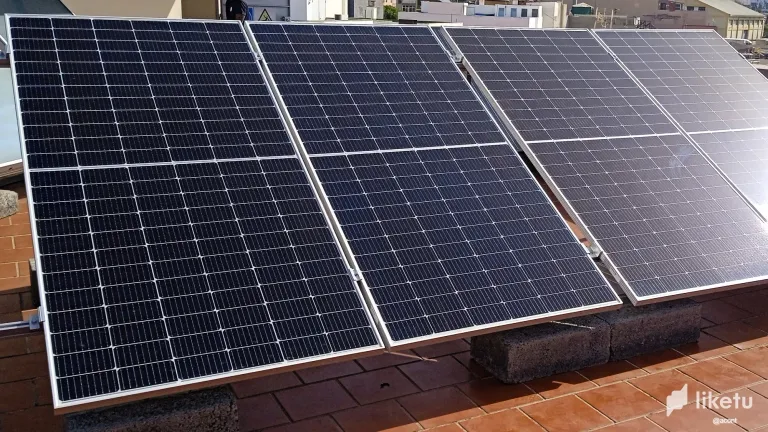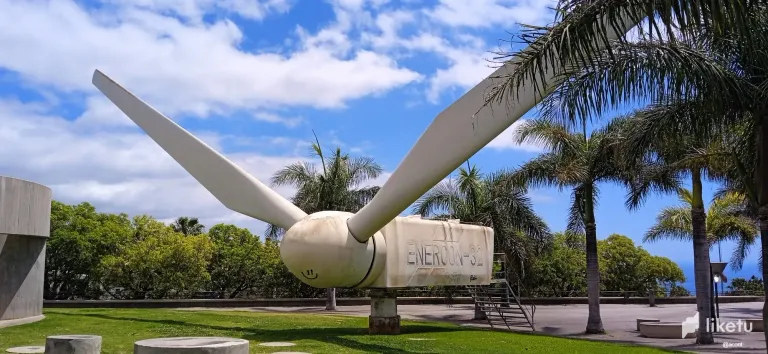Energías Renovables☀️♻️ [ESP-ENG]


El año pasado,, realicé un curso de Proyectos e Instalaciones de Paneles Solares Térmicos. En un principio, mi objetivo era realizar un curso sobre paneles fotovoltaicos, pero en medio de la búsqueda del centro de formación para realizarlo, me convencieron de tomar el curso de térmicas, el cual también incluye un poco de las fotovoltaicas.
¿Sabes cuál es la diferencia entre un panel solar térmico y uno fotovoltaico? Básicamente, el primero capta energía del sol para su aprovechamiento "térmico", es decir, generar calor para proveer Agua Caliente Sanitaria (ACS) o para cualquier otro proceso relacionado a la utilización de fluidos a alta temperatura. Los paneles fotovoltaicos, en cambio, se utilizan para convertir la energía solar en energía eléctrica, es decir, corriente y voltaje, para proveerr electricidad a un edificio.
Mientras uno se conecta mediante tuberías que transportan fluidos, el otro se conecta mediante cables que transportan corriente eléctrica. He tenido la oportunidad de experimentar con los paneles térmicos durante el curso y es impresionante lo rápido que se logra calentar el agua, desde 25 hasta 80ºC en pocos minutos. Es por ello que se colocan aislantes en las tuberías de la instalación.
¿Cómo se diferencian entre ellos? Seguramente habrás pensado que son todos iguales. En la fotografía pueden observar un panel fotovoltaico. Estos suelen poseer celdas claramente divididas entre sí. Los térmicos, por otro lado, suelen ser de un color oscuro homogéneo. No siempre es así, pero generalmente sí.
Es increíble el potencial de utilizar estas instalaciones en países como Venezuela, en donde la energía solar abunda y la electricidad suele faltar. Y no solo se podría aprovechar la energía solar sino la éolica (del viento), pero eso es otro tema. En la otra foto, una hélica de un molino en un parque de Tenerife.

Last year I took a course on Projects and Installation of Solar Thermal Panels. Initially, my goal was to take a course on photovoltaic panels, but in the middle of the search for the training center to do it, they convinced me to take the thermal course, which also includes a bit of photovoltaics.
Do you know the difference between a solar thermal panel and a photovoltaic panel? Basically, the first one captures energy from the sun for its "thermal" use, that is, to generate heat to provide Domestic Hot Water (DHW) or any other process related to high-temperature fluids. Photovoltaic panels, on the other hand, are used to convert solar energy into electrical energy, i.e. current and voltage, to provide electricity to a building.
While one is connected by pipes carrying fluids, the other is connected by wires carrying electric current. I have had the opportunity to experiment with thermal panels during the course and it is impressive how quickly water can be heated, from 25 to 80ºC in a few minutes. That is why insulators are placed in the pipes of the installation.
How do they differ from each other? Surely you must have thought that they are all the same. In the photograph, you can see a photovoltaic panel. These usually have cells clearly divided between them. On the other hand, thermal panels are usually of a homogeneous dark color. This is not always the case, but it is usually the case.
The potential of using these installations in countries like Venezuela, where solar energy is abundant and electricity is often lacking, is incredible. And not only solar energy could be harnessed, but also wind energy, but that is another topic. In the other photo, a windmill propeller is in a park in Tenerife.
Translated to English language with the help of DeepL.com
Otras redes sociales:
 |
 |
 |
F1 & motorsports: @acontmotor
Expresión Creativa. Literatura | Entretenimiento | Arte: @acontblog
| ¡Gracias por visitar! — ¡Thanks for visiting!  |
For the best experience view this post on Liketu
https://twitter.com/acontcivil/status/1752448129872621985 #POSH X
Congratulations @acont! You have completed the following achievement on the Hive blockchain And have been rewarded with New badge(s)
Your next target is to reach 600 posts.
You can view your badges on your board and compare yourself to others in the Ranking
If you no longer want to receive notifications, reply to this comment with the word
STOPTo support your work, I also upvoted your post!
Check out our last posts:
Thanks for your contribution to the STEMsocial community. Feel free to join us on discord to get to know the rest of us!
Please consider delegating to the @stemsocial account (85% of the curation rewards are returned).
You may also include @stemsocial as a beneficiary of the rewards of this post to get a stronger support.